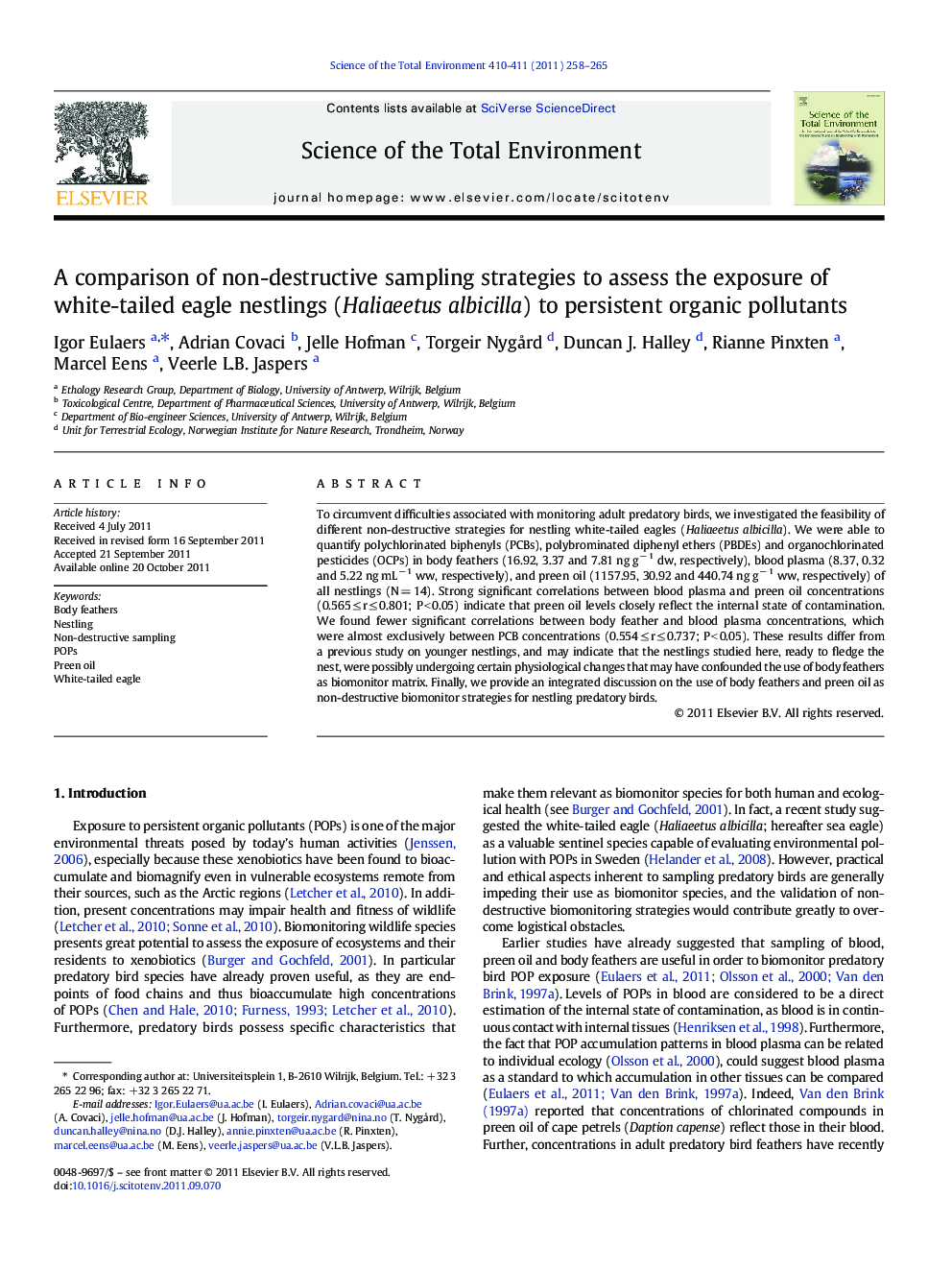| Article ID | Journal | Published Year | Pages | File Type |
|---|---|---|---|---|
| 4429897 | Science of The Total Environment | 2011 | 8 Pages |
To circumvent difficulties associated with monitoring adult predatory birds, we investigated the feasibility of different non-destructive strategies for nestling white-tailed eagles (Haliaeetus albicilla). We were able to quantify polychlorinated biphenyls (PCBs), polybrominated diphenyl ethers (PBDEs) and organochlorinated pesticides (OCPs) in body feathers (16.92, 3.37 and 7.81 ng g− 1 dw, respectively), blood plasma (8.37, 0.32 and 5.22 ng mL− 1 ww, respectively), and preen oil (1157.95, 30.92 and 440.74 ng g− 1 ww, respectively) of all nestlings (N = 14). Strong significant correlations between blood plasma and preen oil concentrations (0.565 ≤ r ≤ 0.801; P < 0.05) indicate that preen oil levels closely reflect the internal state of contamination. We found fewer significant correlations between body feather and blood plasma concentrations, which were almost exclusively between PCB concentrations (0.554 ≤ r ≤ 0.737; P < 0.05). These results differ from a previous study on younger nestlings, and may indicate that the nestlings studied here, ready to fledge the nest, were possibly undergoing certain physiological changes that may have confounded the use of body feathers as biomonitor matrix. Finally, we provide an integrated discussion on the use of body feathers and preen oil as non-destructive biomonitor strategies for nestling predatory birds.
► Fledgling blood plasma, body feathers and preen oil were comparatively evaluated. ► Detection of PCBs, PBDEs and OCPs proves analytical feasibility of all matrices. ► POP accumulation in preen oil closely reflects the internal state of contamination. ► External contamination and sequestration timing confound body feather accumulation. ► Transitional physiology of fledglings may be at the core of such confounding.
